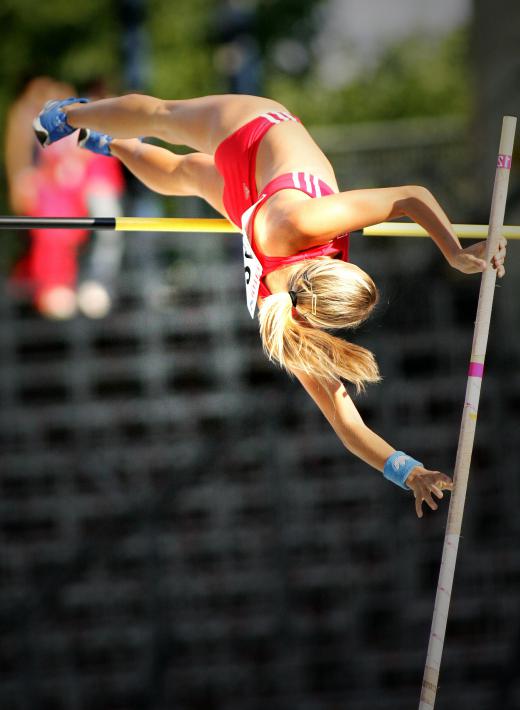Pole vaulting is a height jump made in track and field events with the aid of a long, flexible pole. The pole is used to jump over a horizontal crossbar without knocking it down. The jump is preceded by a sprint, and the landing is made at the bar onto a soft or cushioned area. The pole is let go at the height of the vault, as the jumper crosses the bar. Like high jumping and broad jumping, pole vaulting has been around since the Olympics of ancient Greece, and has become popular as an Olympic sport since the advent of the modern Olympic Games in 1896.
In pole vaulting, jumps are made by each jumper at progressive heights. As one jumper eclipses a certain height, the bar is raised for the next jumper. The last height scaled is the winning height. The vault is lost when one jumper fails to reach the height set by their competitors. The vaulter gets three attempts at every jump, by which point they must clear the bar or they are disqualified. The pole vaulting world record height was established by Sergey Bubka of the Ukraine in 1994, when he reached a height of 6.14 m (20.1 feet).

The event begins with a sprint down a rubber track, like the long jump. The vaulter will generally keep the pole in an upright position at one end, lowering it as he nears the bar, with both hands on the pole. The other end of the pole is then lowered into the mat as the crossbar is approached. The flexible nature of the pole supports the weight of the vaulter as their momentum swings the pole upward toward the bar. The jumper then releases from the pole at the zenith of its height, usually just at or under the bar.

The bar can be maneuvered over, much like a long jump. The pole vaulting athlete often distorts their body through a series of twists, rotations, or somersaults. Usually with their back or front arched upward to keep the center of mass as low as possible, the pole vaulter attempts to clear the bar. The pole is released before the bar is reached, and thrown or dropped down to the track. The athlete then drops into the mat below, onto their back or shoulders.

The sport began as a natural reaction to the environment and a means of survival. Poles cut out of trees or nature, often bamboo poles, were used to clear obstacles such as swamps or small gorges. This evolved into the competitive pole vaulting of flexible, steel tubes and pits of sawdust that began in the early 20th century. From these developments arose the use of large, foam mats for the landing area and aluminum and fiberglass poles for the vault. Most modern poles are tipped with rubber and bendable but sturdy enough to support the weight of nearly any pole vaulting performer.
